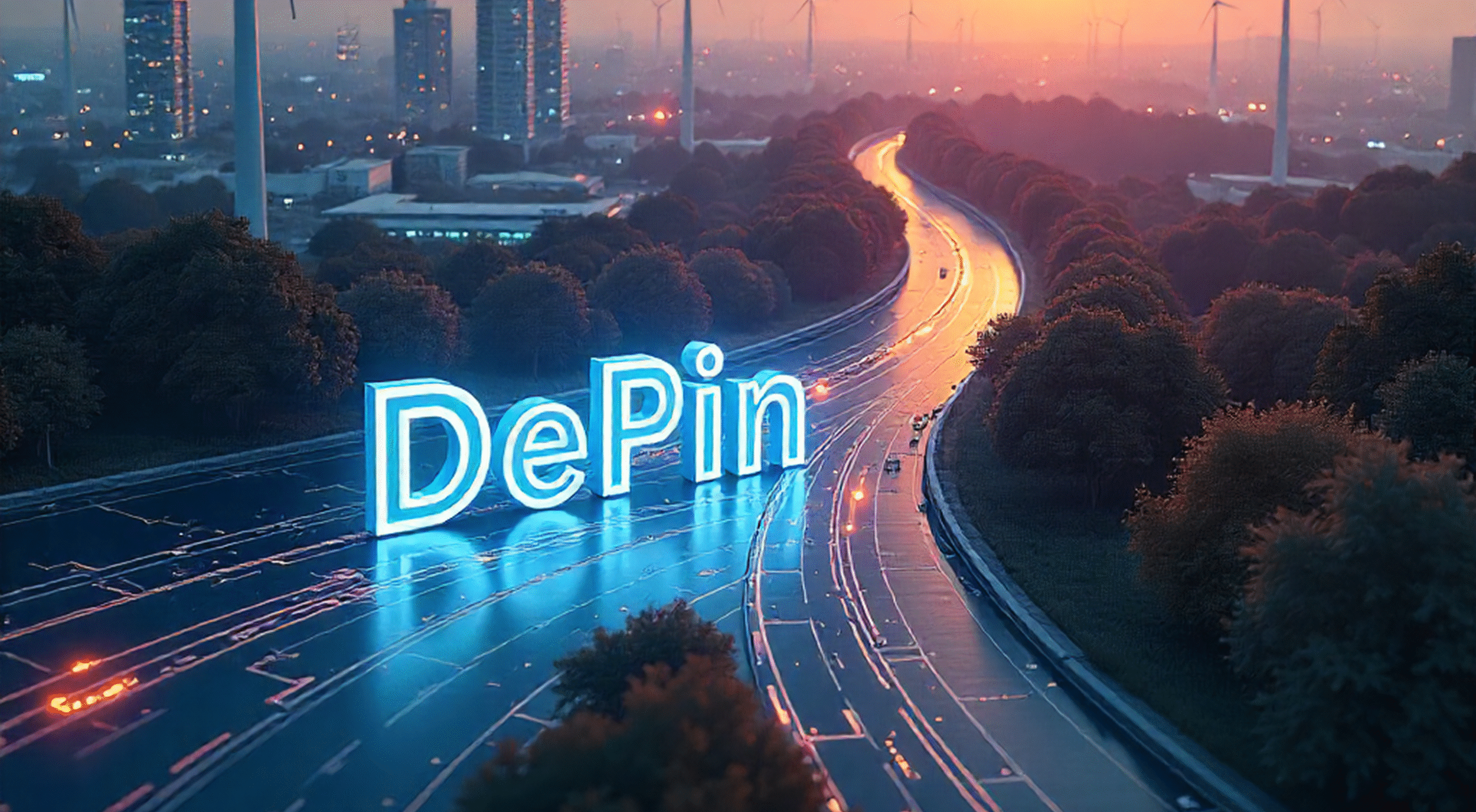Introduction: What Is DePIN and Why It Matters
In 2025, blockchain technology is moving beyond digital assets into the physical world—powering everything from wireless networks to energy grids. The engine behind this transformation is DePIN, or Decentralized Physical Infrastructure Networks.
DePINs use blockchain, tokens, and decentralized incentives to build and operate real-world infrastructure collaboratively. Whether it’s powering IoT networks, EV charging stations, or decentralized cloud storage, DePIN is laying the foundation for Web3-native infrastructure.
At Blockchain Solutions, we help enterprises, developers, and governments tap into the power of DePIN to decentralize, tokenize, and optimize physical systems.

What Is DePIN?
DePIN stands for Decentralized Physical Infrastructure Network. It refers to blockchain-powered networks that crowdsource infrastructure deployment and maintenance through token-based incentives.
Instead of a centralized company building and running the network, DePINs reward users or node operators for:
-
Sharing bandwidth
-
Hosting data
-
Providing wireless access
-
Powering physical sensors
-
Running charging stations
Everything is recorded, verified, and rewarded via smart contracts on-chain.
Examples of Popular DePIN Projects
Some of the most innovative DePIN projects in 2025 include:
| Project | Category | Description |
|---|---|---|
| Helium | Wireless networks | Users deploy hotspots and earn tokens for coverage |
| Filecoin | Decentralized storage | Users rent out spare storage on-chain |
| Render Network | GPU sharing | Decentralized rendering for AI, gaming, and film |
| WeatherXM | Climate sensing | Users earn tokens for running weather stations |
| DIMO | Mobility/Telematics | Cars and devices earn tokens for shared data |
These networks are proof that token incentives can power decentralized physical systems better, cheaper, and faster than traditional corporate models.
Why DePIN Is Booming in 2025
The DePIN economy is expected to exceed $50 billion in value by 2030. Here’s why:
-
Low startup cost: Anyone with a device can contribute infrastructure
-
Global scalability: No central party limits expansion
-
Incentivized growth: Tokens reward early adopters and contributors
-
Resilience: DePINs are censorship-resistant and more robust than centralized alternatives
-
Revenue sharing: Instead of profits going to corporations, value is redistributed to the network
From smart cities to sustainable energy, DePIN is becoming a core layer of the Web3 stack.
DePIN Use Cases in Saudi Arabia & GCC
DePIN is especially relevant in Saudi Arabia and the Gulf due to the region’s rapid tech adoption and smart infrastructure goals.
1. Decentralized 5G Networks
Projects like Helium Mobile and Pollen offer decentralized alternatives to traditional telecom, ideal for connecting remote areas or smart cities.
2. Green Energy Microgrids
Solar panel owners can tokenize energy output and sell it peer-to-peer via DePIN, aligned with Vision 2030’s sustainability goals.
3. EV Charging Networks
Operators can deploy EV chargers and earn tokens based on usage, promoting clean transportation without relying on central authorities.
4. IoT and Smart Sensors
Smart farming, weather forecasting, and logistics can benefit from crowdsourced sensor data rewarded via DePIN tokens.
How DePIN Works
-
Participants deploy infrastructure nodes (hotspots, storage, sensors, etc.)
-
Activity is recorded on-chain and verified
-
Smart contracts issue rewards in the native token (e.g., HNT, FIL, RNDR)
-
Users pay for services via tokens (bandwidth, storage, energy, etc.)
This model allows decentralized, token-driven economic coordination of massive infrastructure projects.
Benefits of DePIN Over Traditional Infrastructure
| Benefit | Traditional Infrastructure | DePIN Infrastructure |
|---|---|---|
| Central Ownership | Corporations & Governments | Community, Open Source |
| Monetization | Few investors | Anyone can earn from usage |
| Scaling | Capital intensive & slow | Permissionless and global |
| Transparency | Limited | On-chain, auditable |
| Innovation Speed | Bureaucratic | Agile and fast-paced |
How Blockchain Solutions Supports DePIN Startups
At Blockchain Solutions, we empower Web3 founders and businesses building on DePIN with:
Our DePIN Services:
-
Smart contract development for reward distribution and staking
-
Tokenomics modeling for sustainable, fair incentives
-
Node operator dashboard design with live analytics
-
Regulatory consultation to ensure DePIN tokens meet KSA compliance
-
Partnerships with hardware & IoT providers
We guide clients from prototype to mainnet deployment, ensuring your DePIN network is secure, scalable, and investor-ready.
Future of DePIN: What’s Next?
In the next 3–5 years, we expect:
-
Interoperability across DePIN networks via cross-chain bridges
-
AI-driven routing and dynamic pricing for infrastructure use
-
ESG-compliant DePINs for carbon credits and clean energy tokens
-
Government-led initiatives using DePIN to modernize public utilities
DePIN will not only complement Web3 but redefine how real-world infrastructure is owned and governed.
Conclusion: Build the Future with DePIN
DePIN marks the beginning of a new era—where physical infrastructure is open, democratized, and decentralized. It’s a movement that rewards contribution, removes barriers, and aligns perfectly with blockchain’s core ethos.
At Blockchain Solutions, we’re committed to helping innovators build the physical Web3—one node at a time.
👉 Ready to Launch a DePIN Project?
Contact us today to start building decentralized infrastructure with real-world impact.
